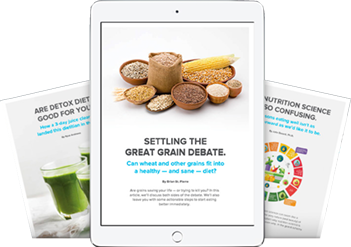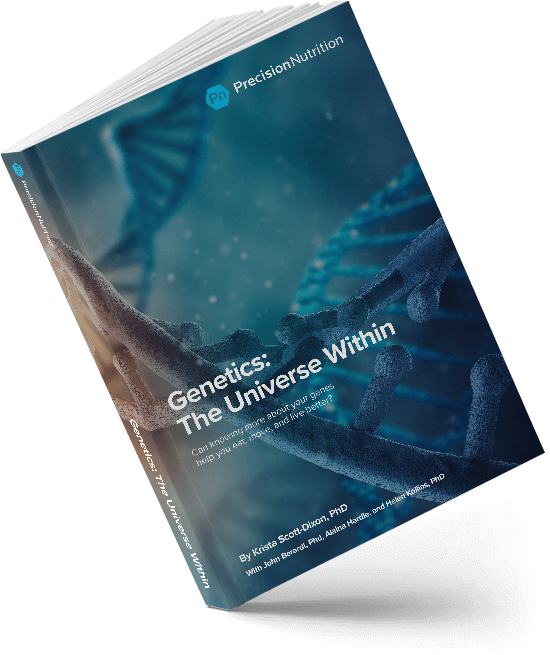Chapter 1
Introduction
“Our fate cannot be taken from us. It is a gift.”
– Dante Alighieri, Inferno (1472)
“Oh, I am fortune’s fool!”
– William Shakespeare, Romeo and Juliet (1595)
What if you could know your future?
If you could know how you would live? How you might die? Where your path might take you in the meantime?
Would you do anything differently?
Would you try to fight fate? Or just let yourself be swept along in the river leading to the inevitable waterfall of your ending?
Human beings have wondered about destiny for a long time.
Is our life course pre-determined? Is there some kind of plan?
Do we have free will? Can we do anything we like? Or are there limits?
If there’s a plan, who or what creates it?
In 2017 BC, we might have said: The gods. The stars. The spirits. The same powerful, invisible forces that create gusts of wind also push and pull us along the path of our lives.
Today, we might say: Genetics.
Human beings have also wondered about who they are, and why they are that way.
Why is one person tall, and another one short? Why is one person quick to anger, and one calm? Why did this person get sick when the plague hit, and not that one?
Why is so much of ourselves often hidden from us?
Why don’t we know why we do things?
Are we really “just like” our fathers, or mothers, or second cousins? Are we basically just carbon copies of our ancestors, or are we a blank slate?
Again, today, we often try to answer these questions with: Genetics.
“Genetics” seems like the answer to everything.
But is it really?
For instance:
- What can we really know about ourselves using the tools of genetic analysis, and what is just speculation, wishing, and guessing?
- How much certainty can we really gain from knowing about our genome? Are genetic data a “for sure”, a “maybe”, or “I dunno”?
- If we find something we don’t like, how much can we change? How negotiable is the expression of our genes?
- What’s important and what’s not? Our genome has a lot of information. Is all of it relevant to our concerns and interests? Do we really care about the genetic program that makes the third eyelash from the left?
- Even if we can get all the knowledge we want, what should we do with it?
Genetics is an exciting area of exploration.
In 2000, scientists mapped out a “rough draft” of the human genome — our “genetic code”.
In 2003, the National Human Genome Research Institute (NHGRI) in the U.S. announced that they had successfully completed the Human Genome Project.
Now we had a map of ourselves — in theory, the code for all human beings on earth.
And not just humans. Some form of this code is in every living thing on Earth.
You are directly related to the bacteria that live on your body.
Yes, you might have diverged a billion years ago, and don’t really plan to get together at Thanksgiving, but there’s a part of your genome, and a part of their genome, that came from the same place.
This system of coding created all life — from mushrooms, to dolphins, to oak trees, to us.
In 2007, commercial genetic testing services like 23andMe became available to the general public. Anyone could have their genome scanned and read.
Since then, the field of genetic testing and genetic counseling has exploded. It’s now cheaper, faster, and easier to get your genome examined.
Genetic testing looks to answer Big Questions like:
- What if we could know — not just speculate, or guess, or wonder, but know for sure — how we work at the most basic level? What, exactly, our bodies are doing?
- What key opens which lock? What exact set of genetic instructions makes us a sprinter, or have heart disease, or have a funny-looking baby toe?
- What does our future hold? What diseases might we get (or avoid)? How might we grow and develop?
- How can we be better? Is there something in our genetic code that could tell us what to eat or how to exercise? What supplements to take to function better, or lower our risk of disease?
Some advocates of genetic testing suggest that they also have the Big Answers.
“Do this genetic test, and we’ll tell you exactly what health, fitness, and nutrition plan you need.”
It’s an exciting promise.
What if we could have a complete plan for everything that we wanted to do, change, or improve?
A plan based on our unique, special blueprint? A one-in-seven-billion program, just for us?
Wow. That would be amazing. Wouldn’t it?
“Take a back seat, horoscopes! See ya, metabolic typing! Later, random trial and error!”
“There’s a new plan in town! And it’s gonna tell me everything I would ever need to know about what to do!”
Well…
We’re not quite there yet.
But we are at a thrilling crossroads in human knowledge and understanding.
Imagine you are standing outside a toy store. It has a small window.
You can see in the window. You get a glimpse of what the store contains.
But the window is too small to show you everything.
If you squint and peer inside, and crane your neck, you can see tiny bits and pieces. An action figure here. A train set there.
You know the toy store is full of cool, fun, interesting stuff to play with.
You just can’t see it all…
Yet.
That’s where we’re at with understanding genetics and how we might use it.
In this book, we’ll peek into the toy store.
We’ll tell you:
- What genetic testing is, and how it works.
- What genetic testing can do… and not do.
- What genetic testing can tell you… and not tell you.
- What you can learn about your health, fitness, and nutrition through genetic testing.
- Which tests might be better, more accurate, or more useful than others.
- What you might do with any information you get from genetic testing.
- Why we think this is exciting and cool, and full of potential… but not quite a magic solution to anything yet.
All of this is “right now”.
As in, here’s what we can realistically do or know right now. Here’s what tools are available right now.
Of course, “right now” will change.
We want to dream, and we also want to be scientists.
We’ll tell you what possibilities genetic testing can offer, and what the actual research says.
We encourage you to read this book with the following mindset:
There is stuff we know, and stuff we don’t know.
That’s how science works.
This is cool.
Imagine the possibilities. It’s not magic yet… but it could be.
This is complex.
There are no simple answers. There are no “hacks”, appealing as that idea might be.
Get excited, but keep it real.
We may all look like ignorant idiots in 200 years as knowledge and research progresses. (Well, assuming we haven’t lit the planet on fire by then.)
So bear in mind that any scientific claims are subject to critical scrutiny and revision. And try not to write a check that your science can’t cash.
We’re personally invested.
Science is not individual geniuses laboring alone in a lab.
Science is a collaborative endeavor.
This project is no different.
We shared our own genetic data.
18 members of the Precision Nutrition team plus 15 of their family and friends agreed to share their genetic data for this project.
Throughout this book, we’ll look at what they discovered in their genes, and what that might mean for them — and you.
At times, with their consent, we share some personal details about them. (You’ll find out, for instance, who’s a “sugar monster”, who’s the most Neanderthal, and who had an ancestry surprise.)
At other times, we’ll present their data in anonymous aggregate.
Here’s our team.
For more about the people who wrote and reviewed this book, see Chapter 15: Contributors and acknowledgments.
Thanks to everyone who contributed a little part of themselves for their openness and contribution to scientific exploration.
We need to look at this from many angles.
For example, we need to understand such things as:
- the molecular biology of genes and how they work;
- how scientists collect, process, and store genetic data;
- how genetic testing relates to nutrition and exercise physiology;
- how probability and risk work;
- how we might feel about any genetic test results we get; and
- whether knowing about our genes will actually inspire us to change… and if so, how?
So, we’ll look at the topic from different viewpoints to give you depth and context.
The science is neat. But this isn’t just about science.
It’s not just about buzzwords like bio-hacking, personalized medicine, or gene editing.
It’s also about psychology and behavior. How we think about ourselves. What we’re prepared to do to potentially change our fate.
As you read this book, remember an important caution:
As with most preferences, health risks, and genetic traits, there are many complex, interrelated factors.
There is almost never one single gene that inevitably leads to a given result.
Any genetic data we share are simply clues for further exploration.
Here’s what the rest of this book will cover.
Getting started with the fundamentals
The basics of genetics
Genetic testing
Introduction to genetic testing
Specific genetic testing services
Specific topics of interest
What we found: Heredity
What we found: Metabolism
What we found: Body weight and body comp
What we found: Food preferences
What we found: Food intolerances
What we found: Nutrient absorption and use
What we found: Exercise and muscle performance
What this all means and what to do next
What does this mean for you?
References
Glossary of terms
References
Contributors and acknowledgments
Consider this a buffet.
Take what you like and leave the rest.
Skim and scan chapters. Or dig in.
We suggest you peek at Chapter 2, even though it’s kinda heavy-duty. Or check the glossary in Chapter 13 as needed if you don’t recognize a sciencey term.
Think about what you want to get out of this book, and read it accordingly.
Look for the “What this means for you” sections in each chapter.
There, we’ll give you some practical tips for how to think about a given topic, and/or what to do next.
Also, check out Chapter 12 for our overall recommendations.
Let questions be there.
We have some answers for you, but not as many as you’d probably hoped.
Get comfortable with questions, because that’s how science works.
(As the physicist Richard Feynman quipped, “Give me questions I can’t answer, not answers I can’t question.”)
Get curious.
Let’s go!





